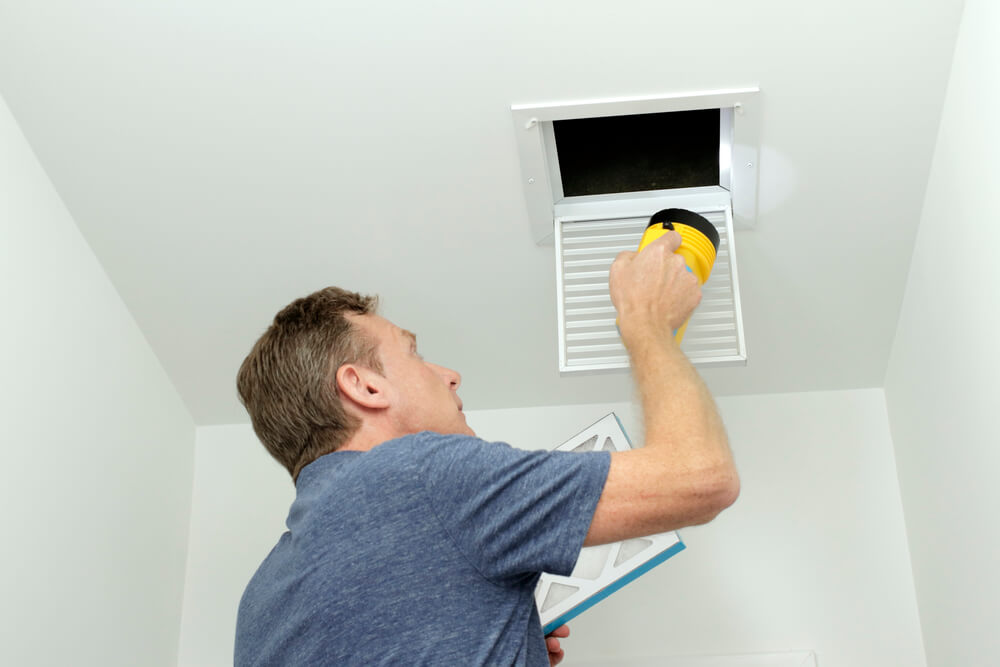You are curled up on the sofa with a red, runny nose and a box of tissues at hand. Allergies again! Plus, your kids scrawled “Wash Me” in the layer of dust that coats everything in the house. You’ve noticed the layer thickens when you first turn on the air conditioning for summer and the heating for winter. A supplier of HVAC in Houston, Superior HVAC, explains that this means it may be time to get your air ducts cleaned.
Your best friend who knows a lot about cleaning homes has suggested perhaps you should get your air ducts cleaned.
However, The Environmental Protection Agency (EPA) says data on the topic is lacking and duct cleaning is not necessary since most dirt adheres to the duct walls. It continues by saying there is no evidence correlating duct cleaning and health.
To confuse things, experts say yes, get your air ducts cleaned every 5 – 7 years because dust accumulates in them and gets spread throughout your home. The EPA does state that perhaps you should get your air ducts cleaned under certain circumstances.
What is the answer here? What conditions would require duct cleaning? Is it worth having the air ducts cleaned if you do not meet any of those conditions, and who cleans air ducts for a living?
What are air ducts?
Air ducts are part of your heating, ventilation, and air conditioning (HVAC) system. The air ducts are used to remove the air in your home and return it to you heated or cooled. The vents that supply air are considered part of the ductwork, as is the air-return which most commonly is the place where the air filter is located.
What are air ducts usually made of?
According to Wikipedia, air ducts are usually made out of galvanized steel. Steel ducts, normally available in rectangular four-foot-long sections, are lined or wrapped with fiberglass insulation.
Flexible aluminum is used for air ducts as well, particularly when an odd shape, such a round spiral configuration is called for. Other materials used less frequently are fiberglass, plastic, fabric, polyurethane, and phenolic foam.
Who cleans air ducts?
Multiple businesses are specializing in cleaning air ducts and you have many choices. Others offer a free easily downloadable e-book about your health and your air ducts.
To find an ethical and knowledgeable cleaner you can always refer to The National Air Duct Cleaner’s Association.
Despite the EPA’s lack of data on the topic, health is a major concern addressed by air duct cleaners. Many explain the danger of bacteria and materials from the air duct itself permeating your home and exposing you to potential allergies, asthma, and other illnesses.
Can I clean my air ducts myself?
Air duct cleaning is not a DIY activity. It takes special protective equipment, tools, and machinery to do a thorough cleaning of your air ducts. Professional cleaning of the entire air duct system calls for a high powered vacuum mounted on a truck and a system that includes hoses 150 ft. long.
Visit this Youtube link to view an impressive and amazing video of professional cleaning of an air duct system.
According to Dengarden, there are things you can and should do to help keep your ductwork sparkling and to lower the cost of frequent professional cleanings. The supplies you’ll need to do this are:
- a vacuum sweeper with a hose
- a screwdriver to remove the metal louvered coverings
- a bristled brush for loosening dirt
- soap and water
- a towel
- clean replacement air filters
With these tools, you should perform these three activities –
- Change the air filter regularly. This is the single most effective way to keep your air ducts free of particulate matter and the air in your home clean, free of pollen, bacteria, and mold spores.
- Clean the supply registers that deliver warmed or cooled air into your home.
- Clean the return air register(s).
Should I get my air ducts professionally cleaned? If so, when and what is the cost?
The EPA lists three instances that call for air duct cleaning. They are mold in the air ducts or outside on other parts of your HVAC system; infestation by rodents, insects, and other varmints; and debris buildup from remodeling or other sources.
Not mentioned specifically by the EPA are items such as damage to the ducts which can be caused by ground settling, holes or breakage caused by rust, breakage in the duct segments due to worn materials like duct tape loosening, and damage from flooding and other natural disasters.
Many, perhaps most, of these conditions cannot be spotted nor fixed by you. It takes a professional.
According to Angie’s List, a cleaning by a reputable professional is estimated from $300 – $500 depending on the size of your home.
The price average is approximately $35 per four-foot segment of ductwork. Finding an air duct cleaner that offers a free estimate is fairly easy and helpful.
To maintain your air ducts and spot problems before they worsen, a professional checkup and cleaning every 5-7 years will help keep you healthy and your air ducts in excellent shape.

